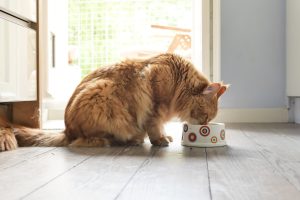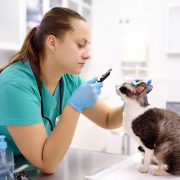Frequency of diabetic remission, predictors of remission and survival in cats using a low-cost, moderate-intensity, home-monitoring protocol and twice-daily glargine
Frequency of diabetic remission, predictors of remission and survival in cats using a low-cost, moderate-intensity, home-monitoring protocol and twice-daily glargine

Open access
In our edition of: Jun 2024
In our categories of: small animals
our summary:
Gottlieb, S.M., Rand, J.S. and Anderson, S.T. (2024) Frequency of diabetic remission, predictors of remission and survival in cats using a low-cost, moderate-intensity, home-monitoring protocol and twice-daily glargine. Journal of Feline Medicine and Surgery, 26 (4)
The aim of this retrospective study was to assess remission, relapse rates, and survival in diabetic cats managed by a protocol of insulin adjustments based on pre-insulin blood glucose concentration measurements made by the owners at home.
The practice records of cats attending a cat only practice in Australia between January 2005 and September 2019 were reviewed to identify diabetic cats following a standardised protocol using twice daily administration of glargine and home-monitoring with pre-insulin blood glucose measurement. Cats were excluded from the study if there was insufficient follow-up in records, a recorded lack of owner compliance, were receiving ongoing corticosteroids for the management of other conditions, were euthanised at the time of diagnosis, or were diagnosed with acromegaly or hyperadrenocorticism.
Data extracted from the records included initial blood glucose concentration, body condition score at the time of diagnosis, if diabetic ketoacidosis or peripheral neuropathy was present, any recent history of steroid administration, dietary data where available, and any episodes of hypoglycaemia requiring hospitalisation. Diabetic remission was considered achieved if cats recorded a non-fasted glucose concentration of ⩽6.5 mmol/l (⩽117 mg/dl) a minimum of two weeks after ceasing insulin therapy and had no clinical signs of diabetes. The remission date was defined as 14 days after insulin cessation, and only cats in their first remission were included.
One hundred and seventy-four cats were included in the study. An overall remission rate of 47% (82/174) was achieved in cats treated with the protocol with a median time to remission of 93 days. Significant factors associated with remission included breed, age at diagnosis and recent corticosteroid administration. Of the cats that went into remission 40.2% (33/82) relapsed. Dietary information was only available for 67.2% (117/174) cats, of these 61.5% were eating diabetic wet and dry food. There was no significant difference in remission rate by diet. Of the 113 cats that had follow up until death, 82% (93/113) survived for more than one year after diagnosis, 35% (40/113) for more than three years and 13% (15/113) for more than five years. Survival time was significantly longer in cats in remission. Over the course of the study, 15.5% (27/174) cats were hospitalised for hypoglycaemia.
Limitations of the study included the retrospective nature, that there was missing data in the patient records particularly in relation to diet, and that there were variations in owner monitoring frequencies.
This study provides some evidence that lower cost home-based protocols can achieve remission in newly diagnosed diabetic cats. Further research is needed to provide a greater understanding of what treatment factors are associated with remission as this will help owners make a more informed choice on the most appropriate treatment option.
The following may also be of interest:
Sparkes, A.H. et al. (2015) ISFM consensus guidelines on the practical management of diabetes mellitus in cats. Journal of Feline Medicine and Surgery, 17 (3), pp. 235-250. https://doi.org/10.1177/1098612X15571880
Re, M. et al. (2023) Monitoring of diabetes mellitus using the Flash Glucose Monitoring System: The owners’ point of view. Veterinary Sciences, 10 (3), no. 203. https://doi.org/10.3390/vetsci10030203
Deiting, V. and Mische, R. (2021) Use of the “FreeStyle Libre” glucose monitoring system in diabetic cats. Research in Veterinary Science, 135, pp. 253-259. https://doi.org/10.1016/j.rvsc.2020.09.015.
Gomez Mejias, Y. (2021) Insulin choice in feline diabetes mellitus. Veterinary Evidence, 6 (3). https://doi.org/10.18849/ve.v6i3.407
Hadd, M.J. et al. (2023) Safety and effectiveness of the sodium‐glucose cotransporter inhibitor bexagliflozin in cats newly diagnosed with diabetes mellitus. Journal of Veterinary Internal Medicine, 37 (3), pp. 915-924. https://doi.org/10.1111/jvim.16730
Claiming CPD for reading inFOCUS articles
Reading and reflecting on articles can count towards your CPD, and we have a template to help you with the process.
Image copyright attribute: nektarstock



Leave a Reply
Want to join the discussion?Feel free to contribute!